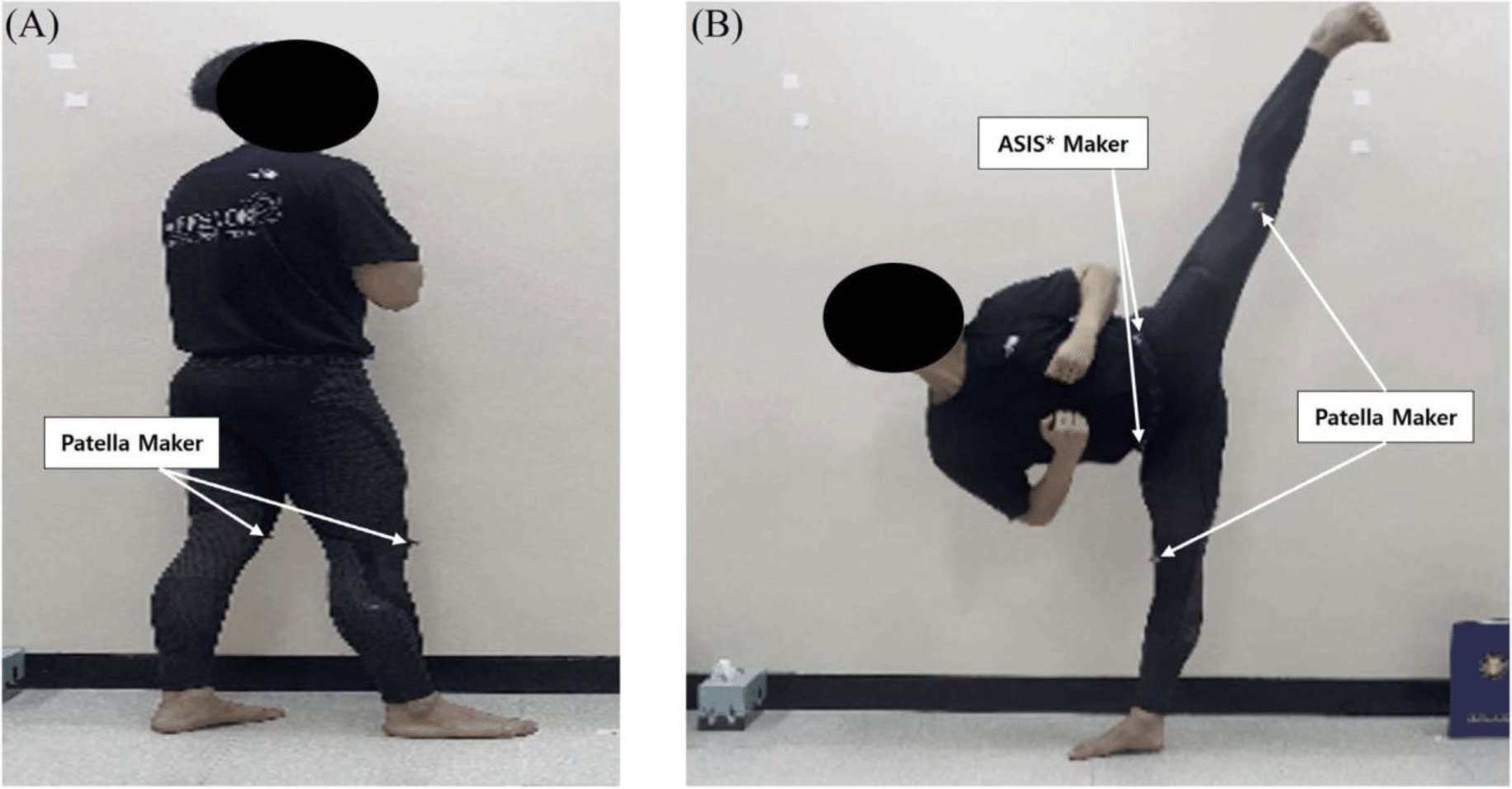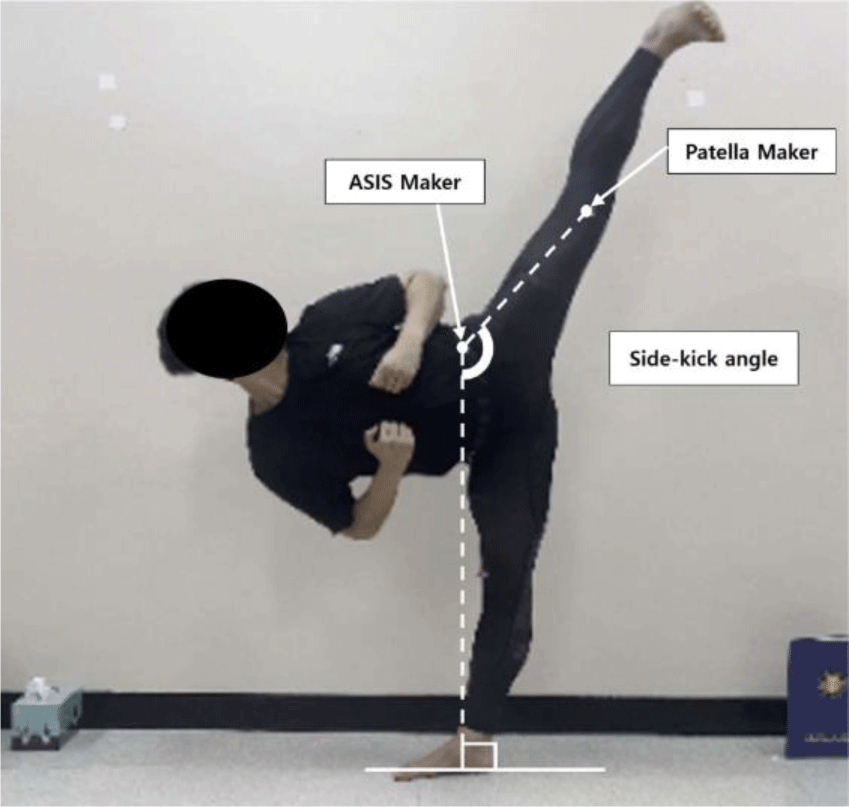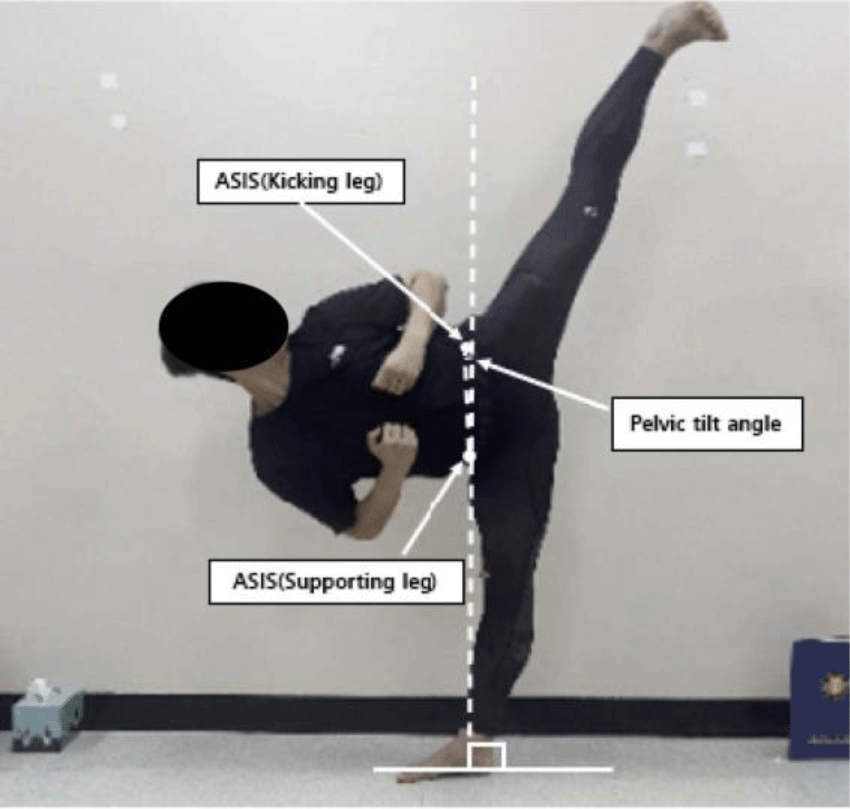INTRODUCTION
Taekwondo is a sport that has been part of the history of the Korean people and is recognized worldwide.1 Taekwondo is divided into three events: sparring, poomsae, and demonstration.2 Poomsae is a combination of offensive and defensive techniques in a prescribed format and is designed to allow practitioners to practice their skills on their own. Poomsae is composed of two letters: poom (shape) and sae (energy and spiritedness). It originated as an instinctive fighting technique to protect oneself and one’s tribe from enemies or wild animals and gradually developed into a skill based on practical experience. Taekwondo Poomsae was included as an official sport at the 2018 Asian Games in Palembang, Jakarta, and the 2023 Asian Games in Hangzhou, China3. An increasing number of Poomsae athletes are practicing with the goal of winning national Poomsae championships and representing their country at international competitions, including the Asian Games.4 There are many types of kicks used in Yudanja Poomsae, of which sidekicks account for 30.2%.5 The sidekick requires the most skill, and athletes who participate in Poomsae competitions have many difficulties and mistakes with sidekicks, and it is not uncommon to see the difference between winning and losing in Poomsae competitions due to the perfection of sidekicks.6
A sidekick is a sideways kick with the back leg supported by the front leg from the front.7 The sidekick is divided into five phases, of which the preparation and kicking phases greatly influence the height of the sidekick. The preparation phase occurs from the moment the kicking foot leaves the ground to the moment the knee joint reaches its minimum angle, where flexion occurs at the hip and knee joints. The kicking phase is from the minimum angle of the knee to the moment of impact with the target, during which the hip is extended and abducted and the knee is extended. Proper execution of the side kick requires basic technique, flexibility, and concentration.8 It has been reported that flexibility is an essential factor for Taekwondo athletes as the sidekick requires high, accurate kicks and a large range of lower limb motion.9
When performing a sidekick, the average angle of hip flexion during the kicking phase was about 94 degrees6, and the average angle of knee extension was 132.1±16.23 degrees.10 Lo6 concluded that the ideal movement for a sidekick is to achieve a hip flexion angle of 94 degrees and a knee extension angle as close to 180 degrees as possible during the kicking phase. To achieve these angles, it is important for poomsae athletes to have flexibility and range of motion (ROM) in the hip and knee joints. In a study by Tak,11 physical fitness factors were compared between sparring, demonstration, and Poomsae athletes in Taekwondo, and the results showed that the Poomsae group had better flexibility and equilibrium than the sparring and demonstration athletes. Flexibility is important for poomsae athletes because the Korean Taekwondo Association’s Poomsae rules,12 state that a movement should start softly and finish strongly; therefore, a lack of flexibility can lead to a disruption in the flow of the movement and an unnatural execution, which can result in points being deducted. Based on previous research and the Korean Taekwondo Association’s Poomsae Rulebook, flexibility is also a factor in the evaluation of Poomsae competitions and has a significant impact on the perfection of sidekicks.
As the sport of Poomsae has evolved, there has been an increasing need for research on sidekicks, which are a major factor in achieving high scores and winning and losing matches. However, most studies have focused on the kinematic analysis of the sidekick,6,7,13,14 and despite the need for research to improve the quality of the sidekick, there is a lack of research investigating its effect on proficiency. Therefore, the purpose of this study was to divide Taekwondo Poomsae athletes into groups according to the quality of sidekicks and to study the effects of lower limb joint ROM, side kick angle, and pelvic tilt angle by comparing high- and low-quality performance groups. Based on these results, this study aimed to provide data for coaches and athletes to improve the technical skills of sidekick movements.
METHODS
Thirty-six registered athletes of the Korean Taekwondo Association majoring in Poomsae were recruited from the Taekwondo Department of the Association. Individuals with the following characteristics were excluded: foot or ankle joint fracture, history of severe lower extremity injury or surgery in the last 3 months, and anxiety. G * power ver. 3.19 (Franz Faul, University of Kiel, Germany) was used for the power analysis. A power of 80%, a level of 0.05, and the effect size(f=0.85) were calculated using the mean and standard deviation of the lower extremity ROM, sidekick angle, and pelvic tilting angle in each group. Based on the power analysis, a minimum of 36 participants was required. The subjects' sidekick and lower-extremity ROM were measured. Two members of the Korean national poomsae team registered with the Korea Taekwondo Association watched sidekick videos of the subjects and categorized them into a high-quality performance group (HG), a middle-quality performance group (MG), and a low-quality performance group (LG) according to the basic movement (kick) scoring criteria defined by the Korean Taekwondo Association. HG and LG were selected and compared to investigate the correlation between lower extremity ROM, sidekick angle, and pelvic tilt angle according to sidekick quality. The physical characteristics of the patients are presented in Table 1. The Institutional Review Board (IRB) at Baekseok University has approved the study (Baekseok University IRB: BUIRB-202403-HR-007).
The subjects wore top and bottom black training suits (Spandex), attached markers that were reference points to both the anterior superior iliac spine (ASIS) and patella, and performed the top sidekick. The arms were held in front of the trunk such that they did not cover the markers on the ASIS (Figure 1). The side kick and pelvic tilt angles were measured using a camera application (4 K, 2,340×1,080 pixels at 60 fps) on a smartphone (iPhone13 mini; Apple Inc., NY, USA) to record the subjects’ sidekicks. The smartphone was placed at a height of 60 cm and a distance of 250 cm from the subjects using a tripod.15 The video recording data were analyzed using an available software package (Kinovea v. 0.8.26, Kinovea, Bordeaux, France).

The footage of the subjects’ sidekicks while stopping at the peak of the kick was analyzed. A line perpendicular to the floor is drawn from the ASIS marker on the kicking leg. The ASIS marker on the kicking leg was then connected to the marker on the patella. The angle between the marker on the patella and line on the floor was measured (Figure 2). Analyze while stopping at the peak of the kick, such as by measuring the angle of a side kick. A line perpendicular to the floor is drawn from the ASIS marker on the supporting leg. The ASIS marker of the kicking leg was connected to the ASIS marker of the supporting leg. The angle between the ASIS marker on the kicking leg and the line on the floor (Figure 3).
Hip flexion was measured with patients in the supine position. A pressure biofeedback unit (PBU) was used to ensure no lumbar movement during hip flexion. The PBU was placed under the subject's lordotic curve between L1 and S1, and maintained at a pressure of 40 mmHg. ROM was measured when the pressure increased to 42 mmHg during hip flexion.16 When measuring ROM, with the axis of the goniometer placed at the greater trochanter of the femur and the stationary and movable arms placed at the lateral midline of the femur.
Hip abduction was measured with the patient in the supine position. The big toe was kept pointing towards the sky to prevent rotation of the femur during hip abduction.17 When measuring ROM, the axis of the goniometer was placed in the ASIS and the stationary and movable arms were placed at the anterior midline of the femur (patellar midline).
Other studies used the straight leg raising test to analyze hamstring ROM. However, in this study, the knee extension ROM was measured in the sitting position as the pelvis stabilized. The subjects were then measured with their ankles in a naturally relaxed position during the knee extension ROM. To prevent lumbar flexion and posterior pelvic tilting during knee extension, both PSIS were palpated from behind the subject to prevent movement.16 The axis of the goniometer was placed at the lateral epicondyle of the femur, the stationary arm was positioned perpendicular to the floor, and the movable arm was placed at the lateral malleolus of the fibula.
Statistical analyses were performed using the SPSS ver. 20.0 (SPSS Inc, Chicago, IL, USA). The Kolmogorov-Smirnov test was used to confirm that the data were normally distributed. An independent t-test was used to compare the experience, lower extremity ROM, side kick, and pelvic tilt angle between the high- and low-quality performance groups. Differences were considered statistically significant at p<0.05.
RESULTS
All variables showed a normal distribution in the Kolmogorov-Smirnov test (p>0.05). The independent t-test results comparing the lower extremity ROM, sidekick angle, and pelvic tilt angle during sidekick performance are shown in Tables 2 and 3.
| High-quality performance group (N=12) |
Low-quality performance group (N=9) |
t | p value | |
|---|---|---|---|---|
| Sidekick angle | 155.8±8.11 | 135.9±4.70 | 6.570 | 0.000* |
| Pelvic tilt angle | 11.8±6.70 | 1.2±6.03 | 3.643 | 0.002* |
The experience was significantly greater in the HG than in the LG (HG: 6.2±3.30; LG: 3.0±1.00; t=2.770, p=0.012).
In the kicking leg side, knee extension was significantly greater in the HG than in the LG (HG: 69.4±9.47; LG: 57.1±13.10; t=2.504, p=0.022). However, hip flexion and abduction were not significantly different between the groups (p>0.05; Table 2). In the supporting leg side, hip flexion was significantly greater in the HG than in the LG (HG: 91.0±10.79; LG: 78.6±13.71; t=2.331, p=0.019). Then, knee extension was significantly greater in the HG than in the LG (HG: 67.4±11.92; LG: 52.7±14.53; t=2.556, p= 0.019). However, hip abduction did not differ significantly between the groups (p>0.05; Table 2).
The sidekick angle was significantly greater in the HG than in the LG (HG: 155.8±8.11; LG: 135.9±4.70; t=6.570, p=0.000; Table 3). Also, the pelvic tilt angle was significantly greater in the HG than in the LG (HG: 11.8±6.70; LG: 1.2±6.03; t=3.643, p=0.002; Table 3).
DISCUSSION
The purpose of this study was to compare the lower extremity ROM, sidekick angle, and pelvic tilt angle according to sidekick quality between high and low groups, to investigate the effects on sidekick proficiency, and to provide data for future Taekwondo athletes and coaches to improve their technical skills in sidekick movements. The results of the comparison of lower extremity ROM between the HG and LG showed that the HG was greater than the LG, and among them, there were significant differences in knee extension of the kicking leg, hip flexion, and knee extension of the supporting leg. This result is similar to the comparison of hip and knee joint angle changes during sidekicks between excellent and non-excellent players,6 in where the average hip and knee joint angles of excellent players were higher than those of non-excellent players.
A previous study showed that the sidekick motion requires more ROM than hip abduction in the human body.18 Another previous study, Dominik,19 reported that hip flexibility and strength are critical to the successful execution of sidekicks. However, the results of our study were not significantly different in hip abduction between the two groups, which may be because, in Taekwondo sidekicks, the supporting leg was accompanied by rotation until the kicking leg reached the target.14 The hip abduction in this study was measured by restricting the rotation of the femur, which may explain why the results are different from those of previous studies that suggest that hip abduction is important. However, there was a significant difference between the two groups in hip flexion of the supporting leg. Kang,20 found that sidekicks resulted in more hip flexion of the non-dominant foot than of the dominant foot, and the results of this study also showed that the hip flexion angle of the supporting leg of the HG was higher than that of the kicking leg. These results suggest that hip flexion, as well as hip abduction, may be an important factor in achieving high sidekicks.
Knee extension was significantly different between the kicking and supporting legs. A previous study reported that the knee needs to be sufficiently extended by strongly contracting the rectus femoris muscle of the supporting leg during the sidekick kicking phase, which is considered to increase the stability of the body during the sidekick movement.6,8 Therefore, the higher knee extension in the supporting leg of the HG than in the LG in this study may be due to maintaining body stability. Fuente’s study,21 reported that taekwondo medalists had higher angles of hip flexion with knee extension than non-medalists. Therefore, the greater knee extension of the HG than the LG in the kicking leg may be due to the better flexibility of the biceps femoris muscle. Thus, knee extension of the kicking and supporting legs may also be one of the factors contributing to a high side kick, as well as hip flexion.
Our study had some limitations. First, the participants were college students in their 20s, which limits their generalizability to adolescents or elderly people. Second, this study focused only on poomsae athletes; therefore, it is difficult to extrapolate the results to sparring and demonstration athletes. Third, this study did not measure sidekick velocity variables; therefore, future studies should include sidekick measurements and velocity correlations specific to each sport and not just Poomsae athletes. Fourth, the use of skin markers on clothing can lead to measurement errors.
CONCLUSIONS
We found that the high-quality performance group had better lower-extremity ROM (knee extension of the kicking leg and hip flexion and knee extension of the supporting leg), sidekick angle, and pelvic tilt angle than the low-quality performance group during sidekicks. Therefore, we suggest that flexibility training for knee extension of the kicking leg, hip flexion, knee extension of the supporting leg, and pelvic tilt should be considered to improve the quality of sidekicks.









